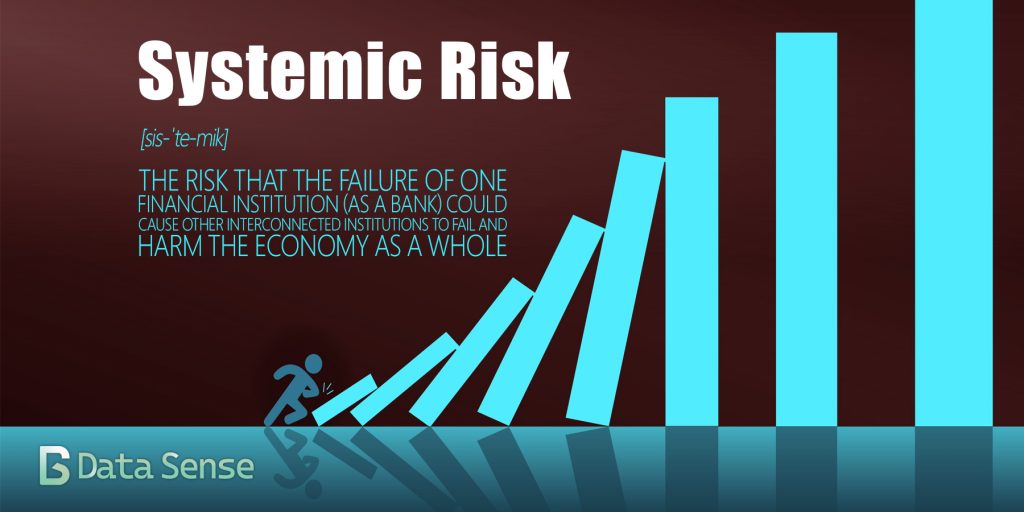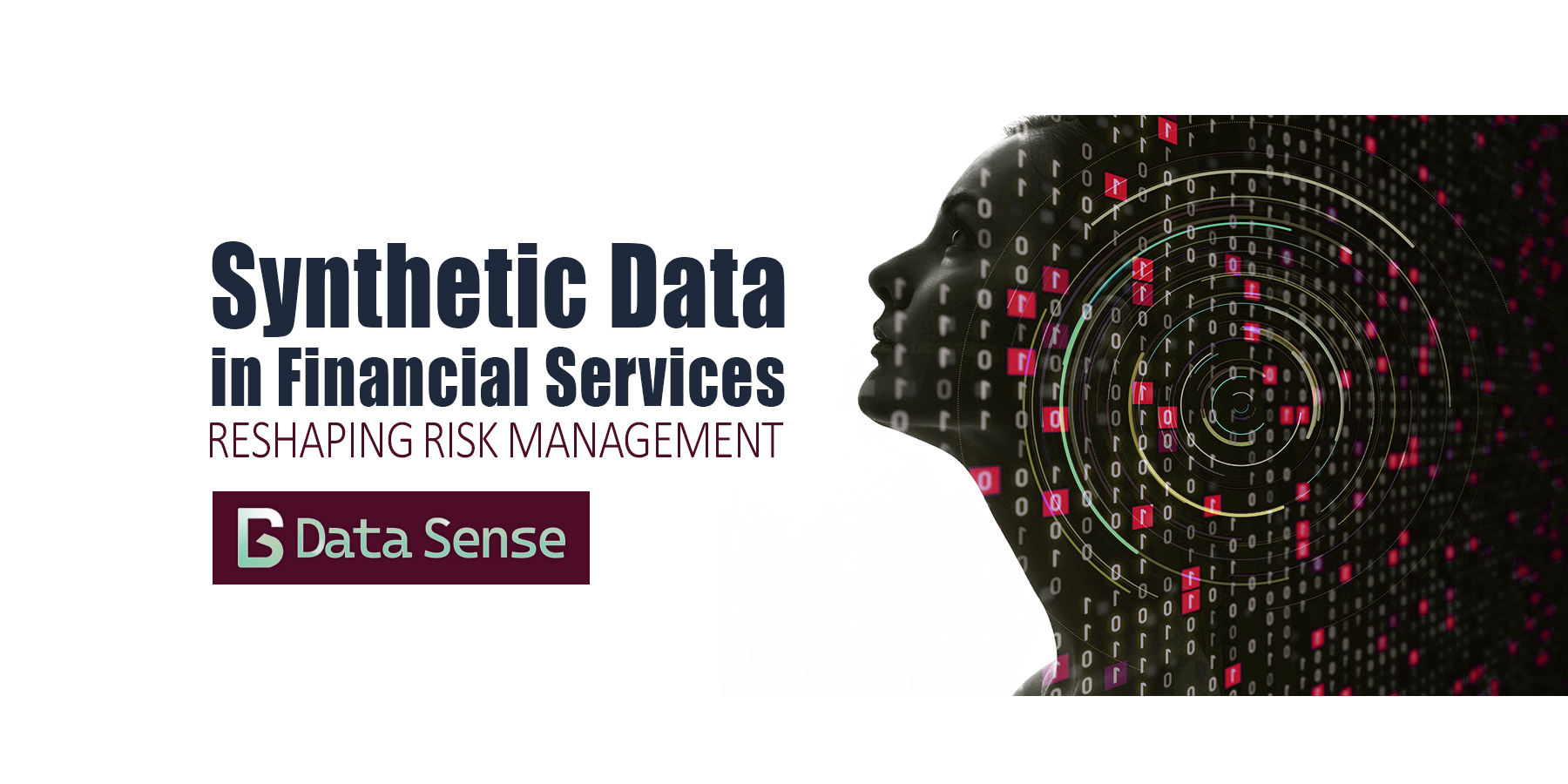As synthetic data in financial services gains momentum, evidence from the Financial Conduct Authority (FCA), the European Commission (EC), and central-bank forums shows it can help close cross-border visibility gaps in risk monitoring and systemic oversight
When Lehman Brothers collapsed in September 2008, supervisors around the world struggled to see how risks were propagating through interconnected balance sheets and payment networks. Traditional reporting systems were too slow, too fragmented, and too siloed to provide the real-time visibility needed for effective oversight. More recently, the downfall of Credit Suisse in 2023 underscored how gaps in oversight and opaque cross-border exposures can still destabilize even the most established institutions. Today, as financial systems grow increasingly complex and digital, synthetic data in financial services is emerging as a promising innovation that could reshape how risk is monitored and managed across global markets.
The question now facing regulators and financial institutions is not whether synthetic data shows promise, but whether it can deliver the missing cross-border visibility without compromising privacy, compliance or analytical fidelity.
From Theory to Practice: Synthetic Data in Financial Services Gains Regulatory Momentum
Synthetic data is gaining significant regulatory traction, as evidenced by recent moves from major UK and EU bodies. In August 2025, the UK FCA’s Expert Group has published a framework for assessing utility, privacy and validation, while the EU’s Joint Research Center found it viable for specific applications in finance. The reports also highlight that the utility of synthetic data is use-case dependent and requires proper governance considerations to instill confidence.
Nonetheless, the outlook is cautiously optimistic. As the financial services industry adopts robust governance and risk management frameworks, synthetic data is proving to be a viable solution for data collaboration. This is changing the operating model. Rather than protracted legal negotiations over sharing raw records, regulators can work from high-fidelity synthetic datasets that preserve statistical structure while protecting identities and sensitive exposures. The FCA’s permanent Digital Sandbox (live since August 2023) also supplies hundreds of synthetic or anonymised datasets to speed experimentation by firms and researchers.
The current landscape at a glance:
- United Kingdom: FCA governance guidance and a permanent Digital Sandbox with extensive financial services synthetic data resources.
- European Union: The Digital Finance Platform Data Hub is using synthetic data, allowing national supervisors to participate without exposing real data to third parties.
- United States: The Office of Financial Research has published guidance on improving machine learning resilience using synthetic data for stress testing and supervisory analytics.
- International: The Bank for International Settlements (BIS) and International Finance Corporation (IFC) have explored synthetic data applications in central banking and cross-border supervision.
The Systemic Risk Revolution: Beyond Traditional Stress Testing

Arguably the most compelling application of synthetic data lies in systemic risk monitoring, where traditional approaches have consistently fallen short. Recent research demonstrates how synthetic data enables regulators to simulate complex financial system shocks. Most importantly, it does so without exposing sensitive institutional data.
A landmark study published in ScienceDirect examined using synthetic data to evaluate the impact of Real-Time Gross Settlement (RTGS) systems on systemic risk. The research revealed that synthetic datasets could accurately model payment system vulnerabilities and cascade effects, while preserving the confidentiality of actual transaction flows. This capability allows central banks to understand systemic risks across interconnected payment networks.
The Bank Negara Malaysia, developed a Generalised Weighted Framework for Synthetic Data Evaluation that addresses privacy preservation, analytical utility, and representativeness. This framework provides central banks with practical tools to assess whether synthetic datasets maintain sufficient fidelity for risk analytics while meeting strict confidentiality requirements.
Synthetic data can also strengthen traditional stress testing models. The U.S. OFR demonstrates this by showing how synthetically generated stress cases can improve the resilience of machine-learning systems used in financial supervision.
How Synthetic Data Transforms Financial Services Infrastructure

Modern synthesis methods (from probabilistic models to deep generative approaches) enable training and testing without exposing customers or institutions. Within the EU Digital Finance Platform, participants can access supervisory synthetic data in financial services contexts to develop and validate AI/ML solutions, with JRC testing to ensure datasets preserve the right statistical properties while protecting confidentiality.
What this unlocks
- Model development without data exposure: Train and fine-tune models on realistic, privacy-preserving datasets that retain key distributions and relationships.
- Cross-border collaboration: Share comparable synthetic datasets among supervisors to run joint studies without moving real data.
- Regulatory sandboxes at scale: The FCA’s sandbox provides >200 synthetic/anonymised datasets for proofs of concept and validation.
- Stress testing and scenario design: Supervisors can generate rare-event regimes and evaluate infrastructure and model robustness.
Applications of Synthetic Data: Investment Management, AML, and Reporting
The CFA Institute’s analysis of synthetic data in investment management reveals practical applications that extend far beyond regulatory compliance. Portfolio managers can test investment strategies using synthetic market data that preserves historical relationships while enabling experimentation with extreme market scenarios that rarely occur in real markets.
For investment firms, synthetic data addresses several critical challenges:
- Backtesting Enhancement: Traditional backtesting is limited by available historical data. Synthetic data generation can create extended time series that maintain market relationships while providing access to a broader range of market conditions.
- Privacy-Compliant Research: Investment research often requires analysis of sensitive client data. Synthetic alternatives enable research teams to conduct sophisticated analysis without exposing actual client information.
- Regulatory Reporting: Investment managers can develop and test regulatory reporting systems using synthetic client data that maintains statistical accuracy while eliminating privacy concerns.
Implementation Challenges & Governance for Synthetic Data in Financial Services
Despite promising applications, implementation faces significant challenges. The FCA rightly notes that adoption is not automatic. Common failure points include weak validation of analytical fidelity, unclear governance, and audit trails that do not translate to synthetic pipelines.
These hurdles make robust evaluation frameworks a necessity. The Bank Negara Malaysia, framework provides the key metrics to check privacy, utility, and representativeness together, a fundamental precondition for using synthetic data in compliant risk models and reporting.
What good synthetic data practice looks like
- Policy and purpose binding: Tie each synthetic dataset to a specific supervisory or business objective and prohibit secondary use without review.
- Dual validation: Statistical similarity tests plus “fit-for-analysis” checks (e.g., does a stress model on synthetic data produce decisions similar to real-data baselines?).
- Audit and Compliance: Maintain reproducible synthesis pipelines, versioning, and risk assessments to satisfy internal audit and regulators.
- Data Quality Validation: Ensuring synthetic datasets maintain sufficient statistical fidelity to real data while preserving privacy requires sophisticated validation frameworks.
Cross-Border Coordination: The Big Lift for Financial Regulators’ Synthetic Data

Data-localization and secrecy laws have long hobbled cross-border supervision, creating gaps in systemic risk monitoring. Synthetic data offers a solution by enabling regulators to share analytically useful datasets without violating data protection laws or compromising national security.
This is moving beyond theory to practice. The OECD highlights synthetic data as a key enabler of international coordination. The EU’s Data Hub demonstrates a practical implementation of this approach. The platform allows national supervisors to contribute compatible synthetic datasets for EU-wide analysis without sharing raw records. This architecture supports effective collaboration between financial regulators while maintaining confidentiality.
Measuring Success: KPIs for Risk and Oversight
The effectiveness of synthetic data implementation can be measured across several dimensions that align with both regulatory objectives and business value:
- Privacy preservation: Demonstrable resistance to re-identification and attribute inference at dataset and release levels.
- Analytical fidelity: Comparable results to real-data baselines for systemic-risk, AML, or prudential models.
- Operational efficiency: Faster proofs of concept, lower time-to-model, and reduced data-sharing friction (e.g., sandbox reuse of shared synthetic corpora).
- Regulatory acceptance: Explicit guidance that clarifies when synthetic data in financial services is acceptable for supervisory analytics versus production reporting.
Conclusion: The Data Professional’s Synthetic Future
The evidence from global regulatory initiatives demonstrates that synthetic data has evolved from an experimental technology to a practical tool for addressing fundamental challenges in financial oversight and innovation. The FCA’s comprehensive governance frameworks, the EU’s operational implementation through the Digital Finance Platform, and the BIS’s international coordination efforts collectively signal a new era of privacy-preserving financial data sharing.
For data professionals working in financial services, synthetic data represents both an opportunity and a strategic imperative. Organizations that develop synthetic data capabilities now will gain competitive advantages in model development, regulatory compliance, and cross-border collaboration. Those that delay adoption risk falling behind as synthetic data becomes standard practice across the industry.
The transformation from data scarcity to synthetic abundance will reshape how financial institutions approach risk management, regulatory compliance, and innovation.
From Strategy to Implementation: How Data Sense Delivers Synthetic Data Success
As synthetic data transitions from regulatory experiment to operational reality, overcoming implementation hurdles requires specialized expertise. Data Sense partners with financial institutions to build and deploy synthetic data capabilities that are robust, compliant, and valuable.
Our consulting is built on the very frameworks defining this space. We help clients navigate the governance, validation, and fidelity requirements outlined by the FCA and the Bank Negara Malaysia. Whether your goal is to accelerate model development, streamline regulatory reporting, or enable secure cross-border collaboration, we provide the strategic and technical guidance to ensure your synthetic data initiatives deliver tangible ROI while meeting the highest standards of privacy and utility.
The synthetic data revolution in financial services is underway. The question for financial institutions and regulators is not whether to embrace this technology, but how quickly they can implement it effectively. Data Sense provides the path forward.
Works Cited
- Bank Negara Malaysia,. “Generalised Weighted Framework for Synthetic Data Evaluation.” Central Bank Technical Papers, 2025, www.bancaditalia.it/pubblicazioni/altri-atti-convegni/2025-ifc/S2.3_3_Generalised-Weighted-Framework.pdf.
- BIS/IFC. “Data science in central banking – unlocking the potential of data.” BIS/IFC Publications, 2025, www.bis.org/ifc/publ/ifcb64_00_rh.pdf.
- BIS/IFC. “Exploring machine learning applications in generating synthetic data.” Basel Committee Research, 2025, www.bis.org/ifc/publ/ifcb64_25.pdf.
- Central Bank of the Bahamas. “A synthetic data set to benchmark anti-money laundering methods.” AML Conference Whitepaper, 2024, bahamasamlconference.centralbankbahamas.com/documents/2024-03-26-15-09-54-Session-4—A-Synthetic-Data-Set-to-Benchmark-AML-Methods.pdf.
- CFA Institute. “Synthetic Data in Investment Management.” CFA Institute Research Reports, 2024, rpc.cfainstitute.org/sites/default/files/docs/research-reports/tait_syntheticdatainvestmentmanagement_online.pdf.
- DAC Beachcroft. “FCA issues its Report on synthetic data in financial services.” Legal Analysis, 2024, www.dacbeachcroft.com/en/What-we-think/FCA-issues-its-Report-on-synthetic-data-in-financial-services.
- European Commission. “Digital finance: Synthetic data and policy.” EC Digital Finance News, 8 Oct. 2024, finance.ec.europa.eu/news/digital-finance-2024-10-08_en.
- European Commission. “Digital financial services: synthetic data ensures compliance with confidentiality requirements.” Joint Research Centre News, 20 Mar. 2024, joint-research-centre.ec.europa.eu/jrc-news-and-updates/digital-financial-services-synthetic-data-ensures-compliance-confidentiality-requirements-2024-03-20_en.
- European Commission. “Synthetic data in the Data Hub of the Digital Finance Platform.” JRC Technical Report, 2024, publications.jrc.ec.europa.eu/repository/bitstream/JRC137249/JRC137249_01.pdf.
- Financial Conduct Authority. “Generating and using synthetic data for models in financial services: governance considerations.” FCA Corporate Publications, 19 Aug. 2025, www.fca.org.uk/publications/corporate-documents/synthetic-data-models-financial-services-governance-considerations.
- Financial Conduct Authority. “Report: Using Synthetic Data in Financial Services.” FCA Corporate Reports, 8 Mar. 2024, www.fca.org.uk/publications/corporate-documents/report-using-synthetic-data-financial-services.
- Frontiers/JAIR. “An Artificial Intelligence Approach to Regulating Systemic Risk.” Frontiers in Artificial Intelligence, 2019, www.frontiersin.org/journals/artificial-intelligence/articles/10.3389/frai.2019.00007/full.
- Global Government Fintech. “European Commission seeks proposals on synthetic data for digital finance ‘data hub’.” Industry Analysis, 10 Apr. 2024, www.globalgovernmentfintech.com/eu-digital-finance-platform-data-hub-synthetic-data-call-for-proposals/.
- OECD. “Regulatory approaches to artificial intelligence in finance.” OECD Financial Policy Reports, Sept. 2024, www.oecd.org/content/dam/oecd/en/publications/reports/2024/09/regulatory-approaches-to-artificial-intelligence-in-finance_43d082c3/f1498c02-en.pdf.
- Regulation Tomorrow. “FCA Report: Using synthetic data in financial services.” Regulatory Analysis, 19 Aug. 2025, www.regulationtomorrow.com/eu/fca-report-using-synthetic-data-in-financial-services/.
- ScienceDirect. “Using synthetic data to evaluate the impact of RTGS on systemic risk.” Financial Systems Research, 2024, www.sciencedirect.com/science/article/pii/S1572308909000436.
- The Alan Turing Institute. “Synthetic data generation for finance and economics.” Research Projects, 2024, www.turing.ac.uk/research/research-projects/synthetic-data-generation-finance-and-economics.
- US Office of Financial Research. “Improving the resilience of machine learning in financial systems.” OFR Policy Papers, 2024, www.financialresearch.gov/partnerships/files/financial-machine-learning-resilience.pdf.
- Zenodo. “The Regulatory Future Of Synthetic Data.” Academic Policy Research, 2024, zenodo.org/records/13342141/files/Paper_The_Regulatory_Future_of_Synthetic_Data_EN_2024.pdf.
